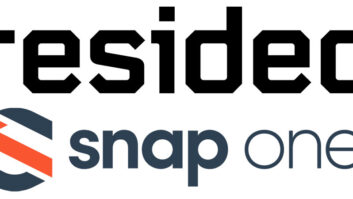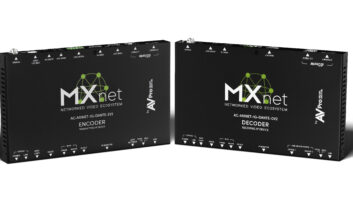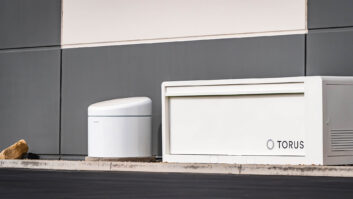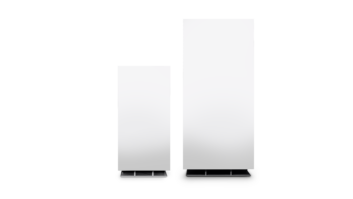Editor’s Note: With the help of Weinstock Media Analysis (WMA), Residential Systems magazine is launching a new, long-term research initiative to learn many important and previously unrecorded statistics about the residential systems industry. The following article, based on WMA’s research results from the professional A/V industry, will give you an idea of where our new project might lead. We cannot do this without you. Please fill out the survey on resmagonline and help us all make the residential systems business a more professional and profitable one. The information that you supply will only be used in aggregate form, and your personal and company data will never be supplied to anyone without your permission.
The adaptation of A/V signals to run over IT standards is surely one of the key technology trends of our era. It crosses over from the professional audio and video production industries to telecommunications carrier networks and enterprise networks and into residential systems. It is not the only tech trend out there, by a long shot, but all the others have to contend with it.
This past spring my firm, Weinstock Media Analysis (WMA) conducted a comprehensive study of the market for technology and services allowing the transport of audiovisual material over standard IT (information technology) infrastructure. We looked at all kinds of audio and video equipment compatible with Internet Protocol, Ethernet and other widely used telecommunications standards (but not at such pure A/V standards as AES/EBU audio, ITUR 601 video, Digital Betacam or DVCAM video, etc.) and at the integration services that builds these signals into enterprise and carrier infrastructure. What we found is a $517 million industry in 2002, and we project that hardware, software and services will combine into a $3 billion industry in five years.
Much of that industry, by 2007, will be about products that either can be or are built into home LANs (local-area networks). We, however, did not measure the residential market at all, only enterprise and professional installations and that was hard enough! By all available measures, the residential systems market seems to be booming, and virtually every A/V technology provider expects that this market will be driven by technology that runs A/V over DSL and cable modems to Ethernet systems (both wired and wireless) for full home (and car, in many cases) integration of computer and A/V networking and control. It is, therefore, reasonable to expect–as most manufacturers in our surveys do–that consumer-electronics-sized volumes will determine the shape and the pricing for what gets built for all IT markets. In other words, instead of chips developed specifically for professional A/V production or for enterprise computing and networking, these fields will largely use consumer hardware that is adapted with software for specific purposes. This is just what the wider consumer market will require, with different software. PCs and TVs and video recorders, in fact, have already traveled this road.
There is one major problem with this analysis, and it is a problem that gives just about everybody on the supply side of several technology industries the jitters. It is the statement by all available measures the residential systems market seems to be booming. You see, there simply have not been many available measures for this “booming” market. We know that CEDIA attendance has been rising. We know that somebody is reading Residential Systems and asking for the publishers to send it to them. We know that factory sales of HDTV sets and plasma screens and broadband connections and home WAN (wide-area network) routers and DVD players (most of all) have been rising rapidly. But that’s about it. We all need to know much, much more.
To find out more, WMA has entered into a partnership with Residential Systems publisher United Entertainment Media, to conduct a comprehensive study of this market. We will find out:
*How many installations are performed per month and year, per region of the country.
*Typical revenues and profit per installation.
*What technology people are buying per revenue-level of installation, how that has changed in recent years and how it is expected to change in the near future and how that may differ per region.
*What kinds of consultation and other services go into each installation, and how much labor.
*Brand preferences per revenue level and region.
*Levels of competition in your region, growth rates, overall industry revenues and profitability, and more.
We need to look at all of this in great detail. Screen sizes, viewing room sizes, number of rooms equipped for video and sound and how many channels per room? And more questions than we even know how to ask just yet.
To find all that out, we need to ask you. We need to ask you in every possible way. At the CEDIA EXPO this September, we will have interviewers roaming the show floor with short questionnaires. Between now and then, we will be conducting an extensive e-mail and telephone survey. And there is a response card in this magazine. Please fill it out, and please help us out when we e-mail you or call you or greet you at the CEDIA show. Many hundreds of interviews and responses are an absolute necessity, in order to make this industry information resource possible.
What’s in it for you? For three years, from 2000 through 2003, I was a partner in a start-up making a semiconductor with embedded software for audio home networking over Ethernet and IEEE 1394 (FireWire). We strongly believed in our market, and so did (and do) the many industry heavyweights with whom we talked about partnering, but it was not easy to find bankers who shared that belief. My job was both to find the fellow believers and to scour the earth for data that would compel belief. It was far easier to find the believers, and we were all going on a collective hunch! Through two investment rounds, we were lucky enough to find bankers who shared that hunch. They, however, would not have bought in without established chipmakers also buying in, because we weren’t lucky enough to find much meaningful data.
Good data on our industry will compel the attention of bankers, so that residential systems contractors will be able to get the financing that allows you to expand as you know you can. It can allow many firms in the industry to share information to build economies of scale. It can prove your importance to technology suppliers, for better financial terms as well as equipment better tailored to your needs.
With your help, we will have some preliminary data available by September, which we will present at the CEDIA EXPO. We will have more and more accurate data coming out in the months after the conference and in follow-up surveys. WMA has been doing this in similar industries since 1993, and I have since 1984. We have seen how our data has helped the cable TV and professional A/V production industries grow, and we know a great new opportunity when we see one.







